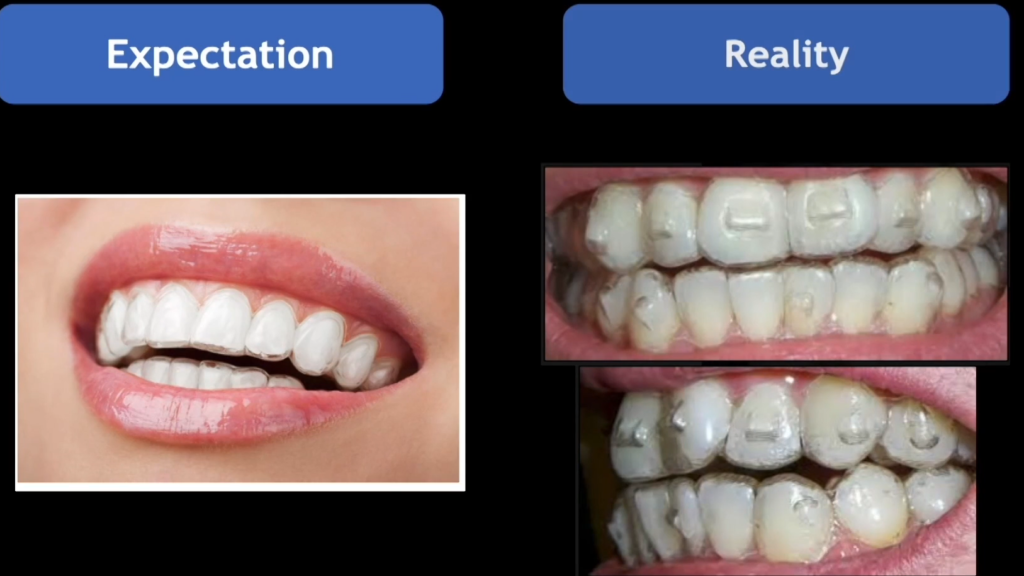Clear aligner therapy, including options like Invisalign, Angel Aligners, and Spark, are among the most popular orthodontic options today. Thanks to advertising and social media, they’re often viewed as the most modern and aesthetic way to straighten teeth.
While clear aligners are a powerful tool, it’s important to understand when they work best, how they work, and who is most qualified to use them effectively.
Clear aligners are removable plastic trays designed to gradually move your teeth into better alignment. Each tray is digitally planned and adjusted to make slight movements, bringing your teeth closer to their ideal position with every stage.
To be effective, aligners must be worn for at least 22 hours per day, and should only be removed for eating, drinking, and brushing.

Despite being described as “invisible,” clear aligners are actually clear, not invisible. Most treatments require the use of tooth-coloured attachments—small, subtle bumps bonded to the teeth. These attachments help the aligners grip and move the teeth more precisely. While they slightly affect aesthetics, they’re a routine and essential part of effective treatment.
Clear aligners can be highly effective in many mild to moderate cases. However, in more complex cases—such as severe crowding or when extractions are needed—fixed braces often deliver more predictable and efficient results.
Here are some key differences to keep in mind:
When searching for a clear aligner provider, you might come across titles like:
These labels sound impressive, but they simply indicate the volume of Invisalign cases treated—not the quality or success of those treatments. A provider could treat hundreds of cases and still fall short of the high standards expected in specialist care.
That’s why it’s essential to choose your provider based on expertise, not marketing titles.
Orthodontists undergo years of specialist training beyond dental school. This advanced education covers areas like:
As a result, orthodontists are trained to deliver results that are not only aesthetically pleasing, but also functionally stable and long-lasting.
Many general dentists offer clear aligners but may not be equipped to assess when aligners are appropriate—or when a different treatment method would be more effective. This can sometimes lead to the overuse of aligners, even in cases better suited to braces or other appliances.
In Europe, one of the only certifications that evaluates clear aligner expertise based on quality of treatment—rather than quantity—is awarded by the European Board of Aligner Orthodontics (EBAO).
To earn this certification, candidates must submit multiple complex aligner cases for peer review by expert orthodontists across Europe. Each case must also include at least one year of post-treatment retention records, proving stability—not just short-term aesthetic results.
I am currently the only orthodontist or dentist in Ireland to have passed the EBAO assessment and achieved Diplomate status.
This experience has reaffirmed one of the most important lessons in aligner therapy:
Not every case is best treated with clear aligners.
Being selective about when to use them often means treating fewer cases—but achieving better, more stable outcomes for patients.
Completing a postgraduate fellowship in clear aligner therapy, along with numerous advanced courses taught by some of the leading aligner orthodontists worldwide, allowed me to treated hundreds of clear aligner cases, ranging from simple to highly complex.
I currently work with Invisalign, Spark, and Angel Aligners, and use my clinical experience across these systems to provide honest, personalised recommendations for each patient.
Wondering if clear aligners are right for you? Or considering a second opinion?
I’d be happy to help you make an informed decision.
Get in touch today to schedule a consultation.